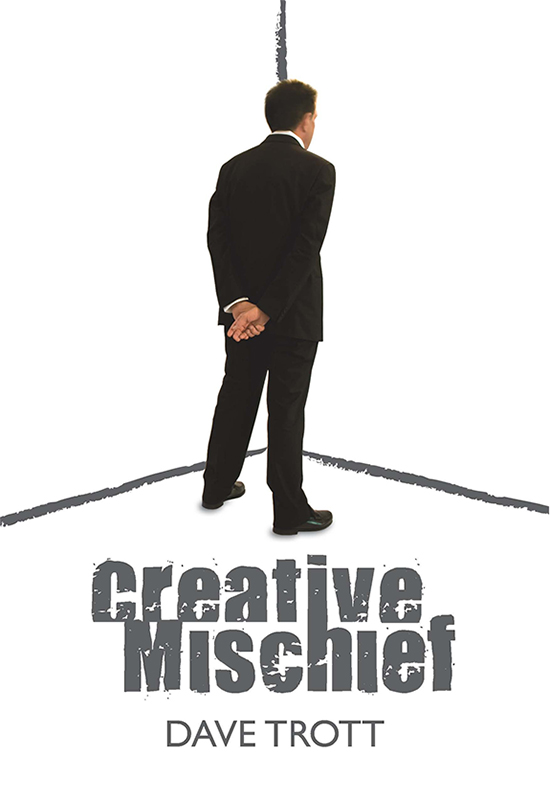Note: This is the second of a two-part series on Neuromarketing. Read the first part here.
Previously we looked at how social proof can lead to more conversions, more sales and more money in your bank account.
Social proof is a cornerstone of neuromarketing.
But it’s not the only child.
In this post, we’re going to look at three of the most powerful selling techniques known to man. Some might call them the twisted twins of social validation.
These techniques are capable of wreaking some serious havoc on the fickle, fanciful minds of our target markets. Which is why I ask – no, plead – that you repent for your sins and wash your keyboard in soap after usage.
The three techniques are:
- Scarcity
- Reciprocation
- The need to rationalize decisions
There is plenty of academic research to suggest that the techniques above are Grade A weapons of mass destruction in the war of selling. Yet still there exists a shortage of examples for how these techniques can be adjusted to the modern web.
Well, that’s what I aim to show you in Part 2 of this series.
Let’s start by looking at scarcity.
How scarcity sells
Scarcity works in tandem with social proofing. Like two magnetic forces pulling a consumer to shipwreck. Together, they are irresistible.
I gave an example of one of my preferred scarcity tactics in the previous post.
“There are currently [17] people viewing today’s offer.”
“[654] people have signed up since October 1st.”
“We have exceeded our capacity! The offer ends in X.”
If you’re too late, don’t worry. We’ll be reopening our doors in December.
Scarcity is the threat of not having. You can see it being used in these popular sales ploys:
- “Only limited tickets remaining.”
- “Accepting [7] new affiliates.”
For scarcity to take effect, supply must be limited and demand must be present.
The guys over at IMGrind are pretty adept exponents of this equation.
IMGrind holds live masterminding sessions at factory line frequency. The events are an opportunity for Internet Marketers to get together and discuss strategies that are currently making money online. While I cannot vouch for how effective these sessions may be, I do admire the precision that goes in to their marketing.
To my knowledge, their latest live event had just 20 seats available. They were selling these tickets at $247 a pop.

Scarcity sets the price point
Setting such a short supply of tickets provides two opportunities:
It gives IMGrind an excuse to bombard your email with headlines like “Just 4 Seats Remaining! Book Now or Never“
It adds value to their second option, which I assume is their primary method of monetizing the event: DVD recordings. It sends out a message, “This event is full of so much smoking hot info, we can only show it to 20 people. But you, you don’t have to travel to New York City. You can get a copy of the DVD and watch from home.“
Of course, when the live tickets do sell out, the event gains prestige. Users are far more likely to part with their wallets.
And what about those $247 DVD prices? Pretty extreme, don’t you think?
If somebody offered me a DVD for $247, I would kindly take the disk, snap it in half, and take a swipe at their jugular. But this price works.
Why does it work? It works because the anchor has already been set.
The event tickets are selling out fast at $247. You have social proofing that the event is worth at least $247. You also have the scarcity of tickets painting a subliminal message in your head that you will be missing out on something great.
The information is not easy to access. Some marketers are travelling to New York City for the session. Let’s be honest. How far out of bed would you crawl for a free WSO?
Remember: The harder it is to obtain, the greater the perceived value.
The final sucker punch in this awesome sales funnel is when IMGrind promotes the aftermath of the event.
They will duly blitz your inbox with success story after success story of how attendees have breathed new fire in to their careers after making the trip. This information is usually followed by an announcement: the DVD recordings will be taken offline in X days.
All that priceless information…
Gone. Vanquished. Never to be seen again.
What you are left with is a scarcity of time + a scarcity of information. Without knowing the exact IMGrind financials, I’m sure they’ll be eating pretty sizeable turkeys this Thanksgiving.
The lesson of scarcity: When we perceive information as being too easy to get, we lower the value of that information. Conversely, we can set high expectations and high demand by raising our prices and creating a bottleneck.
Open up a newspaper and chances are you will find a page dedicated to a stand-up comedian who has inexplicably miscalculated the demand for his shows.

Jimmy Carr. One of my favourite comics.
January 10th, Birmingham, SOLD OUT
January 11th, Birmingham, SOLD OUT
January 12th, Birmingham, EXTRA DATE ADDED
January 14th, London, SOLD OUT
January 15th, London, SOLD OUT
January 16th, London, SOLD OUT
January 17th, London, EXTRA DATE ADDED
Of course, the marketing agencies responsible for these ads know exactly what they are doing.
By releasing extra dates ‘due to popular demand’, those terrible twins – scarcity and social proofing – can begin to work their magic.
You can try to fight it. You can try to analyse every last piece of advertising that comes your way, but there is simply too much of it. And it comes too fast.
Scarcity creates an illusion of desirability. Human nature simply cannot help itself.
You will desire that which is not easily available to you.
If you are reading this blog, I can assume that you are familiar with the sales text: “Only [7] spots remaining. Sign up now!”
More recently, marketers — being marketers — have upped the ante.
For when a static scarcity scare simply isn’t enough, there’s always the animated countdown:

Sped up and repeated for illustrative purposes.
And if that doesn’t shoot the fish in your barrel…
There’s another particularly fiendish technique that involves JavaScript and a ‘Spots Remaining‘ tally that decreases every time the user fills out a text field.
I have experimented with this method on long forms and I can say without doubt: a shrinking supply lubricates engagement.
Those who start entering their information simply cannot stop, no matter how crude or obvious the manipulation.
Just watch those little fingers scurry! And then hang your head in shame.
How reciprocation sells
Reciprocation is, and will always be, the friendly plague of Internet Marketing.
I still remember when link exchanges were a sophisticated form of marketing. When places on blogrolls were squabbled over. When the Warrior Forum was a circle jerk*
* It’s gotten worse. Like a bad wine.
Do you remember MySpace? Of course you don’t. Only Justin Timberlake remembers MySpace.
I tell a lie. My one lasting memory of MySpace was that of the world’s most reciprocal social network.
At least 90% of my actions on MySpace were down to the compelling forces of reciprocation.
“Hey Finch. I just added you to my Top Eight Friends. Wink, nudge.”
“That’s extraordinary news, Brianna. One might call this the proudest day of my life. I guess you’ve risen through the ranks to become my 6th bestest friend. Come and refresh the page. Oh, and jolly well done.”
7 seconds pass.
“Look Finch. I just answered this cool survey and chose you as my friend ‘most likely to die in a hideous car crash before the age of 21!‘ You should do it too.”
“No way! I just answered it. You were my friend ‘most likely to get pregnant in the back of a bike shed and have 3 kids before the age of 25!’“
7 years pass and Finch is proven correct.
MySpace was a lot of things. But above all, it was a land of scratchy backs.
While I hope you have set your goals higher than landing on somebody’s Top Friends list, the psychology behind sites like MySpace can tell us a lot about how we behave.
Reciprocation is embedded in our psyches, particularly on a social level.
What many skilled marketers have noted is that reciprocation can be just as effective when it comes to selling.
We call it the ‘feeling of indebtedness’.
Every squeeze landing page in history owes its success to our feeling of indebtedness. It’s the reason why we don’t unsubscribe immediately after downloading a free giveaway. We understand that there is an exchange in place.
Historically, when we roamed the earth as cave men, to break the law of reciprocation would have been to invite trouble. In most cases, a club to the back of the head.
We have evolved, but elements of the old brain still exist.
You can tap in to this evolutionary hallmark by priming your web users via reciprocation.
How about a free gift? A little ‘something for nothing’ that looks innocuous but casts that sinking feeling of indebtedness.
When launching Premium Posts Volume 6, I used reciprocation in the form of a sneak preview of the product.
Users were able to access 10+ pages of material without paying a penny.
Note: And if you wish to receive the same perk with Volume 7, I suggest you opt-in at the bottom of this post!
The purpose of giving away content I had shed blood, sweat and tears for was not to be a good samaritan. Do I look like a good samaritan? It was to induce a feeling of indebtedness so that someday, perhaps not for several weeks, the sale would arrive.
A key element of reciprocation is that the scale of the good deed rarely matters. I may literally only scratch your back, but if you accept it as a favour, a seed of indebtedness has been planted.
The next thing you know, I’m inviting you to bed…
That’s great. How do I use reciprocation to make more sales?
One of my favourite techniques is the double tiered landing page. It traditionally involves a free giveaway; usually an ebook, or a personalised report; followed by a CPA offer.
The user lands on my page and is asked to submit his name and address to access my prized content. As soon as he has done so, he’s hit square in the chops with a CPA offer wrapped around a very carefully worded recommendation.
It rarely goes like this, but I hope you get the gist:
“Hi Derek, thanks for downloading my free report on ‘How to Save Endangered Hawaiian Seals’.
It took MANY sleepless nights to compile. But I hope you love it.
Just one more thing, if you’re really looking to save some seals, can I give you a recommendation?
AdoptAPremiumSeal.com is my partner’s site.
If you feel a nagging sense of indebtedness to take action, you should definitely check it out. After all, you have already shown me what a worldly soul you have by requesting my report. Most people are too cruel to get this far.
The next logical step, as I’m sure you are aware, is to adopt a seal. Right now.
Seriously, I’m waiting to take your call.
I’d really appreciate it. And I know the seals will too!
Note: I have used seals as an example, but I suppose you could easily use the same copy for ‘Fat Local Slags’. They need homes too.
If it seems like a ridiculous example, I have to tell you… people commit to some ridiculous shit, especially when they feel that they owe you.
Whatever gets the reciprocation monkey off their back.
The lesson of reciprocation: If we want people to take action, a small favour will go a long way. Aim to plant a seed of indebtedness before the user reaches your sales pitch. There are many ways to achieve this on the web. The most potent weapon is a taste of the information they crave. If you can personalise the information, the results will be even greater.
How the need to rationalize decisions sells (over and over again)
Selling to a customer once is the weather smiling on you.
Selling to a customer for the rest of his life is a job well done.
Marketers like myself too often forget that the big money lies in attracting lifelong customers. We affiliates, we love to rinse and burn.
We’d rather attract a million first time sales than deal with the threat of speaking once more to those we’ve used and abused.
The reality? It’s not easy to attract a lifelong customer.
You mustn’t only attract the customer’s wallet. You must attract his best judgment, his sense of identity and his underlying belief that the decision to choose your product was correct. If this belief does not exist, his first conversion will be his last.
Business models cannot stay healthy without customer loyalty. And so providing sweet assurance that a purchasing decision was correct is just as important as getting the bloody minded fool to bust out his plastic in the first place.
How can we help a consumer to rationalise a decision?
There are two techniques that I want to look at:
- Appealing to the user’s sense of identity pre-sale.
- Altering the user’s perception of an experience post-sale.
Appealing to the user’s sense of identity
I have tested hundreds of landing page variables. I can’t think of a single variable quite so potent as the ability to tap in to a user’s sense of identity.
Consumers buy products that align with their opinions.
The products they love most are those that make them feel good about themselves, while expressing who they are.
The very first impression your landing page should create is a sensation of Us Against The World. You should know your target market well enough that you can express their single biggest fear in the headline, along with the solution (your product, obviously!).
Look at the Work at Home Mom industry. It draws in thousands of mothers every single day on the basis of what exactly? No more than a sense of identity.
“I am a work at home mom.”
Yes, you are.
And I am much more likely to sell merchandise to you if I pretend that I am one too. Of course, you’ll never believe me. My tits are too hairy.
You need only look at, oh say, every single religion in the world to see how tribal the human race can be. Neuromarketers understand that what we call in-group bias – the tendency to side with people who share common ground – is an incredibly powerful sales engine.
Appealing to the user’s perception of experience post-sale
Not only will people buy what they believe in. What people buy will often shape what they believe in.
If you want to create a lifelong customer, you can’t leave them at the checkout cart.
Every single Multi-Level Marketing sucker I have encountered has been programmed to believe, with devout faith, that his money is being invested wisely. That’s because the MLM experience relies on shaping the user’s perception after the initial sale/investment.
Now, look at your own sales funnel.
Do you forget about your customers from the moment the sale is made?
You shouldn’t. This is the time to pounce.
If you want to create your own tribe, your own dedicated group of followers, you have to instill the belief that your product is an extension of their own identities.
Don’t restrict freebie giveaways to your non-customers. Provide the best benefits to those who are already your customers. Don’t be afraid to develop an email follow-up series after a sale has been made. And always promote your successes.
IMGrind, the scarcity exponents I referenced at the start of this post, are equally skilled at promoting their successes. An IMGrind event will rarely pass without an email landing in my inbox with the success stories that came out of it.
Following up an event or a sale with positive associations is one of the best ways to ensure that your customers stay loyal. It lets you mould their perception of what you offer.
Reflections on Neuromarketing
This has been a long post, and my fingers are chaffed. If you are still awake, I salute you.
The truth is, neuromarketing is deserving of both your time and attention. It is one of the most exciting, baffling and lucrative fields you could hope to explore.
We can’t control how we are wired as human beings.
Sure, we can make what we might consider to be logical decisions, but they are usually driven by split second judgments that marketers are only just beginning to exploit.
If you really want to understand how to increase conversions, it’s those split second judgments that you need to learn and embrace.
I’ll finish this series by offering a book recommendation: Thinking, Fast and Slow.
Read it. Read it again.
You will soon begin to understand how little we actually know about ourselves. And how what little we do know can be exploited by marketers with money on their minds.
Recommended This Week
Be sure to check out Adsimilis, the official sponsor of Premium Posts Volume 5 & 6. Adsimilis is one of the most effective networks in the world for CPA affiliates. Lots of offers, lots of high payouts, lots of exclusives. Sign up now.






Hi, Finch! I love reading your posts. This is why I followed your recommendation and purchased this book. IMO it's…